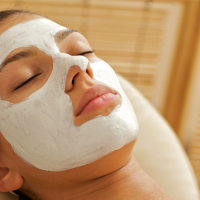What Food Makes Rosacea Worse

Rosacea is a chronic, lifelong skin condition that affects (most often) the face. The disease is common: approximately 1 in every 20 Americans has rosacea. Women are affected more often in the early stages (flushing and erythrosis), but more men progress to the advanced stages and rhinophyma is seen almost exclusively in men over 40 years of age.
Rosacea is characterized by various skin disorders and sufferers must contend with skin flushing, erythrosis (reddish or purplish discoloration of the skin), teleangiectasia (permanent enlargement of small blood vessels), papulopustular rosacea (papules are small, red, raised bumps; pustules are similar but they contain pus) or rhinophyma (enlarged, red, swollen nose) and for many people, some of these signs and symptoms are very common; approximately 94% of people with rosacea have flushing.
These attacks last from a few minutes to several hours, and the flushing seen in rosacea is intermittent in nature. The disease, to a greater or lesser degree, is progressive, and the more pronounced skin lesions will usually follow sporadic episodes of flushing.
The exact cause of rosacea has not been determined, but here are many theories. Exposure to the sun may be one factor, and exposure to the sun can precipitate acute episodes of flushing. Another possible cause are skin mites, Demodex folliculorum and Demodex brevis. These tiny insects usually live at the base of hair follicles.
They are often found on the faces of people with rosacea, and it has been suggested that they may initiate an inflammatory reaction (Inflammation dilates blood vessels and this contributes to the flush, and it may also damage the blood vessels, causing them to be permanently dilated). Infection with the common bacteria, Helicobacter pylori, has also been suggested as a cause. There may also be genetic defects in the vasculature of the skin that causes hem to become easily – and permanently – dilated.
The signs and symptoms of rosacea are not dangerous, but they can be uncomfortable, unsightly, and disfiguring. (However, rosacea can affect the eyes. Approximately 3% to 58% of patients with skin changes will have eye problems and rosacea keratitis can lead to blindness).
Yet although there is no cure for rosacea, the disease can be managed. Topical medication, oral medications and laser therapy can all be used to control flushing and to remove some of the skin blemishes, swollen blood vessels and discoloration. However, it would be far more preferable to prevent outbreaks of flushing and the development of erythrosis and papulopustular lesions. It is well known that there are certain factors – sunlight, stress, heat – that can trigger rosacea signs and symptoms, and food has been identified as a trigger.
What foods have been implicated as causes of rosacea signs and symptoms?
The list is long, and there is obviously individual variations in susceptibility: high doses of B6 and B12, chocolate, tomatoes, hot beverages, hot sausage, red pepper, black pepper, vinegar, paprika, white pepper, garlic, wine, hard liquor, beer, cheese, yogurt, sour cream, milk, citrus fruits, eggplants, avocadoes, spinach, raisins, figs, bananas, and marinated meat.
Why do these foods exacerbate rosacea? No one knows for sure, and given the fact that the exact cause of rosacea hasn’t been clearly determined, that’s not surprising. However a look at the pathophysiology of rosacea may provide some clues.
The flush that is so common in people with roseacea is caused by dilation of the small blood vessels of the face. Why this occurs is not certain. The blood vessels may be genetically weak, or they may be damaged by years of exposure to the sun. There may also be an increase in the number of blood vessels, or there may be damage to the walls of the blood vessels. Whatever the cause, the blood vessels (which in the face are very close to the surface) dilate. Many of the foods that trigger flushing attacks most likely do so by increasing body temperature, and in order to lose body heat, blood vessels dilate. Others may cause flushing by stimulating the release of histamine. This is a naturally occurring substance that dilates blood vessels and some foods, e.g. beer and citrus fruits may stimulate the release of histamine.



